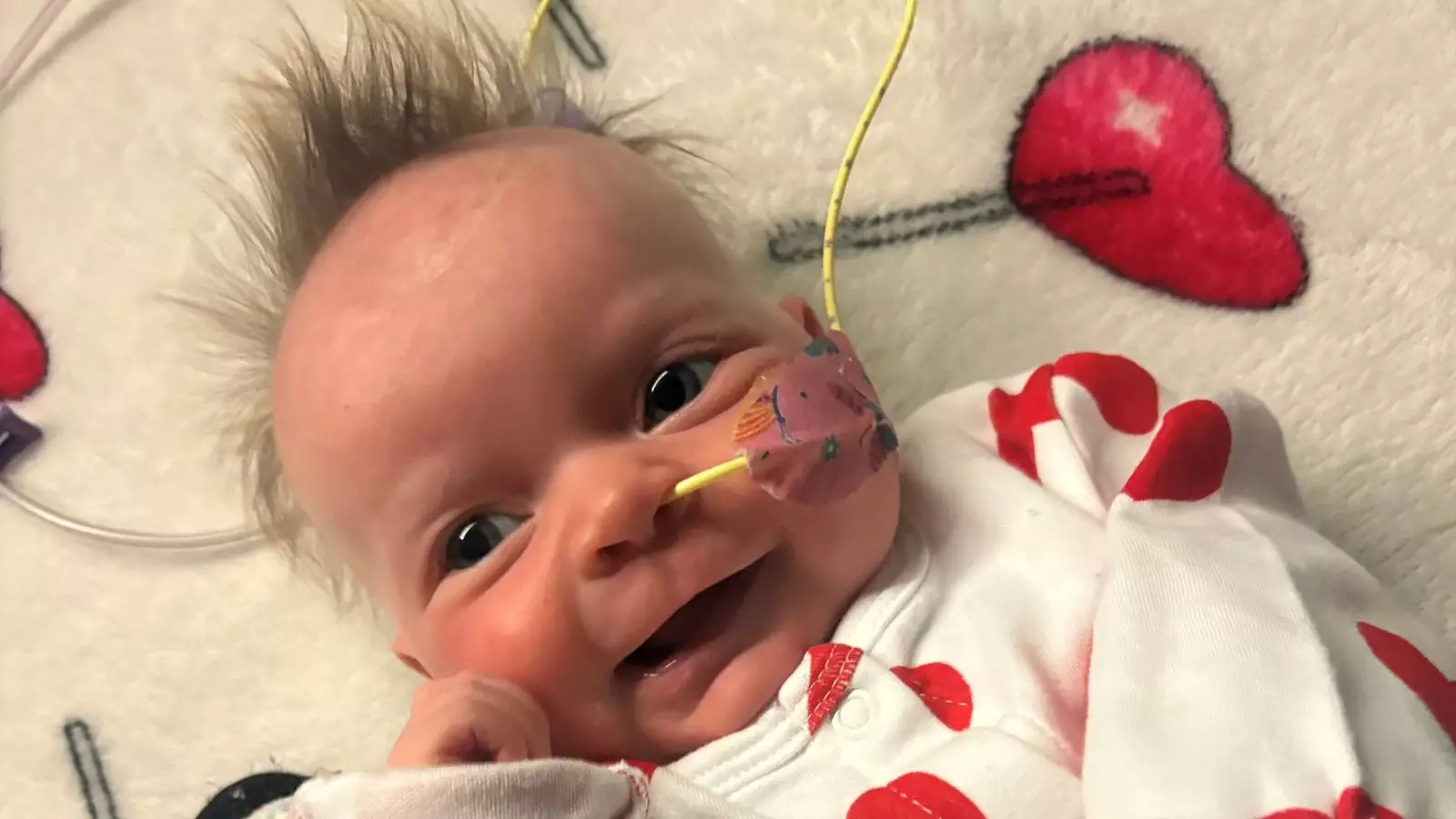In an age where medical advancements often offer hope, the heartbreaking reality facing many families with children diagnosed with rare disorders starkly contrasts this optimism. One such case is that of Dolcie-Mae Edwards-Raymond, a three-month-old girl from Newport, South Wales, who has been diagnosed with hemophagocytic lymphohistiocytosis (HLH), a serious blood disorder. This tragic situation underscores the urgent need for stem cell donation amidst increasing awareness of its life-saving potential.
Initially, Dolcie-Mae’s symptoms were misinterpreted as a viral infection when she failed to gain weight soon after birth. However, the journey toward her diagnosis highlights a significant challenge in the medical community—the difficulty in recognizing rare disorders. The parents, Courtney-Jade Edwards and Ashley David Raymond, received the shattering news about their daughter’s HLH diagnosis when she was merely four weeks old. This circumstance sheds light on how crucial it is for parents and caregivers to be vigilant and proactive about their children’s health.
HLH can develop when certain white blood cells become hyperactive, attacking the body’s organs and critical systems. This disorder not only demands immediate medical intervention but also leads to a tumultuous emotional experience for families. The dread of watching a child undergo such an aggressive attack on their health can lead to feelings of helplessness and despair, as articulated poignantly by Dolcie-Mae’s mother.
Following her diagnosis, Dolcie-Mae’s situation became critical, prompting her transfer to the Royal Victoria Infirmary in Newcastle for specialized treatment. The urgency of the situation is compounded by the need for a matching stem cell donor, something that Dolcie-Mae’s family is fervently seeking. Courtney-Jade urges individuals aged 16 to 30 to consider becoming a part of the Anthony Nolan stem cell register, allowing them to potentially save the lives of children like Dolcie-Mae.
The emotional burden of such a situation pushes parents to reach out to the community for help, sharing their struggles in hopes of prompting action. As Courtney-Jade explained, she and her partner felt “devastated” and overwhelmed with fear upon receiving the diagnosis. The despair even extends to the realization that the only hope for their daughter might lie in a stranger stepping forward as a stem cell donor. This highlights the powerful impact of altruism, as every new registrant could make a life-changing difference.
Organizations like Anthony Nolan play an essential role in connecting potential donors with patients in need. As Charlotte Cunliffe, the director of register development at Anthony Nolan, indicates, the work of these organizations is critical in bridging the gap between donors and recipients. Charlotte reassures families going through similar situations that they are not alone and that their pain is acknowledged. The plea emphasizes the role society can play in ameliorating the suffering of families facing serious medical challenges.
By promoting the message of stem cell donation, it becomes apparent that community engagement can lead to tangible impacts in the lives of families battling illnesses. Those who qualify for registration often have the opportunity to save lives merely through a simple swab test.
The story of Dolcie-Mae Edwards-Raymond is a reminder of the fragility of life and the strength that community support can provide in dire times. It is not just a story of loss and suffering; it is an urgent call for action. By raising awareness and encouraging more individuals to join the Anthony Nolan stem cell register, we can cultivate hope for families navigating their darkest hours. Together, we can create a lifeline for those in desperate need, providing a chance for brighter tomorrows. It is essential to take collective responsibility—not only for our health but for the health of those in our communities. Join the register, spread the message, and let’s work together to improve lives.

Leave a Reply